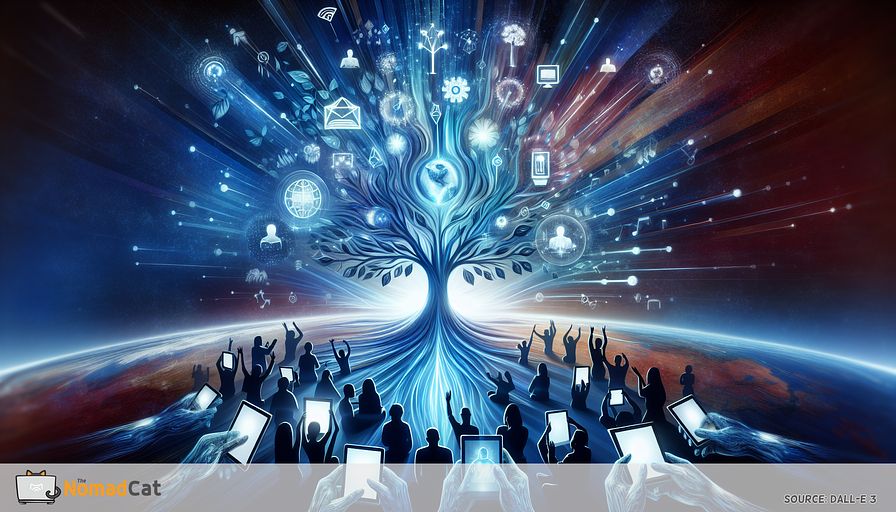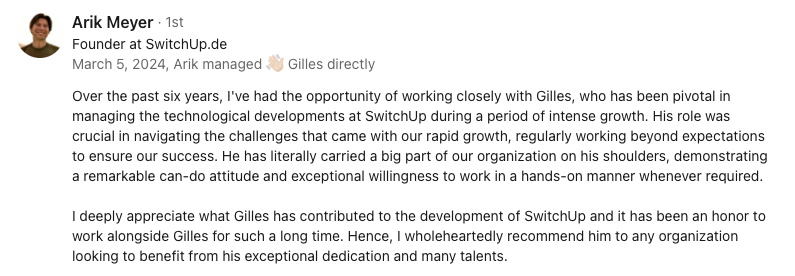Abstract:
This article explores how digital education serves as a vehicle for empowering underprivileged communities, bridging the digital divide, and fostering equality in education. By providing access to online learning tools and resources, marginalized groups gain the opportunity to uplift themselves through technology. The focus is on successful initiatives that have made technology accessible, the challenges faced in implementing these programs, and the impact of digital education on these communities. It stresses the importance of collaborative efforts between governments, NGOs, and tech companies to expand educational opportunities and highlights how these partnerships have led to significant advancements in learning outcomes for the underrepresented. Through real-life examples, the article demonstrates the transformative power of digital education in driving social change and improving lives.
transformative power of digital education for marginalized communities
It's no secret that technology has reshaped our lives in profound ways. But perhaps one of the most awe-inspiring impacts is its ability to transform education, especially for marginalized communities. Picture this: a young student in a remote village, previously cut off from quality learning materials, now has access to a world of knowledge right at their fingertips. Digital education doesn’t just enhance learning; it levels the playing field.
By making technology accessible, we're not just adding a few more tools to the educational toolbox—we're opening up entirely new worlds of opportunity. With digital education, students gain critical skills that empower them to break barriers and seize opportunities previously out of reach. It's not just about coding or learning to navigate software; it's about fostering equality, bridging educational gaps, and driving social change in communities that need it the most.
success stories of initiatives making technology accessible
Sharing success stories is always a treat—it's like bringing a bit of sunshine into the conversation. So, let’s dive into some initiatives that have been true game changers in making technology accessible to marginalized communities.
One Laptop per Child (OLPC)
First up, we’ve got the One Laptop per Child initiative. It’s a project that aims to provide low-cost, low-power laptops to children across the world, especially in developing countries. These rugged, durable laptops are packed with educational software and resources. It’s heartwarming to see how these laptops, often the first interaction with technology for many children, can spark a love for learning. In remote areas where schools might lack books or other learning materials, these laptops have become invaluable learning companions.
Khan Academy
Then there’s Khan Academy. This non-profit educational organization offers free online courses, lessons, and practice in a variety of subjects. What’s fascinating about Khan Academy is that it makes quality education accessible anytime, anywhere. With engaging, easy-to-understand videos, students from around the globe can learn at their own pace. The impact? Countless students who might not have had access to top-notch educational resources now have a digital mentor guiding them through complex topics. It’s like having a private tutor—minus the hefty price tag!
Code.org
Ever heard of Code.org? Their mission to make computer science accessible to all students, particularly underrepresented groups, is nothing short of inspiring. They offer free coding classes, reaching millions of students, many of whom are girls and minorities. Through their engaging and interactive lessons, they're not only teaching coding but also breaking down stereotypes and encouraging diversity in tech. It gives a new meaning to the term "coding for good."
Google’s Project Loon
Google’s Project Loon might sound a bit loony, but it’s pure brilliance. Imagine balloons floating in the stratosphere to provide internet access to remote and underserved areas. This initiative has expanded connectivity in places hit by natural disasters or lacking traditional internet infrastructure. With greater internet access, communities can tap into online educational resources, connect with teachers worldwide, and unlock new educational opportunities.
Pratham Education Foundation's Digital Initiatives
Finally, the Pratham Education Foundation in India has been rolling out fantastic digital initiatives. Their Digital Learning Village program equips rural areas with tablets preloaded with educational content in local languages. It’s particularly impactful in places where traditional schooling resources are insufficient. The feedback from students and teachers has been overwhelmingly positive, showing an increase in engagement and learning outcomes.
These are just a handful of the many inspiring projects out there. They demonstrate that when we harness the transformative power of technology, we're not just teaching how to use tools; we're unlocking potential, fostering ingenuity, and paving the way for a brighter and more inclusive future.
challenges faced in implementing digital education programs
While the impact of digital education is unquestionably positive, it's not without its hurdles. One particularly glaring obstacle is the lack of infrastructure. Many marginalized communities simply don't have reliable electricity, let alone internet connectivity. Consider rural areas where getting decent bandwidth is like striking gold. It’s frustrating to think that even the best digital tools are useless without a stable connection—and it’s a barrier we need to tackle head-on.
Then there's the issue of the digital divide. It's a bitter pill to swallow, but not everyone has access to the hardware needed for digital education. In some cases, there might be sharing among family members, which dilutes the efficacy of learning tools. Tablets or laptops might be out of budget for families already struggling to make ends meet. So, despite the proliferation of low-cost devices, financial constraints remain a significant barrier.
Financial issues extend beyond hardware. The cost of data can also be prohibitive. Imagine trying to stream an educational video on a limited data plan—you'd think twice before hitting 'play.' And when schools or community centers lack funds, maintaining digital education programs becomes a Sisyphean task: always pushing uphill.
Next is the challenge of digital literacy. Having the tools and internet access is one thing, but knowing how to use them effectively is another. In communities where digital literacy is low, initial enthusiasm can quickly turn into frustration. Training teachers and students becomes crucial, but it’s another layer of complexity to manage.
Cultural barriers also play a role. Tech solutions designed without considering local languages or customs can feel alien and uninviting to communities. They need to be culturally sensitive and localized, which often requires bespoke solutions rather than a one-size-fits-all approach.
Lastly, let's not overlook security concerns. Online platforms can be a double-edged sword. Without adequate safeguards, students and teachers can be vulnerable to cyber threats. It’s a delicate balance to strike: making digital education accessible while ensuring it’s safe.
Tackling these challenges requires a concerted effort. It's about looking beyond just providing tools and focusing on creating an ecosystem where digital education can genuinely thrive. Addressing these obstacles isn't easy, but it's more than worth the effort to bring the transformative power of tech to every corner of the world.
the role of collaboration in expanding educational opportunities
When it comes to expanding educational opportunities for underprivileged groups, collaboration is the magic ingredient. You see, no single entity can shoulder the monumental task of digital education alone. Governments, NGOs, and tech companies need to join forces, each bringing something unique to the table, all for the common good.
Governments can provide the necessary infrastructure and policy support, creating a conducive environment for digital education programs to flourish. NGOs often bring a nuanced understanding of local communities, ensuring that initiatives are culturally sensitive and tailored to specific needs. Tech companies, on the other hand, contribute their technological expertise and innovative solutions. Together, this triple alliance amplifies the impact of educational initiatives.
Take, for example, projects where tech companies supply free or subsidized devices while the government builds internet connectivity in remote areas. NGOs step in to facilitate on-ground implementation, training teachers and making sure the programs align with community needs. This synergy results in a more comprehensive approach to education, driving better learning outcomes.
These partnerships have brought about remarkable success stories. Google's collaboration with local governments through Project Loon or the alliance between Khan Academy and various educational NGOs are prime examples. By pooling resources and expertise, these partnerships make digital education not just a possibility but a transformative reality for many underprivileged students.
So, while striking these collaborations might seem like herding cats, the end result is a well-orchestrated symphony, delivering education to the doorsteps of those who need it the most. And hey, who knew that changing the world could also be a team sport?
impact of digital education on marginalized communities
So, what happens when technology meets education in marginalized communities? The results can be astounding. Digital education improves learning outcomes, empowers individuals, and drives substantial social change. Let me highlight a few areas where the impact is most palpable.
First off, there's a significant uplift in learning outcomes. Students from marginalized backgrounds, who might otherwise have had negligible exposure to quality educational resources, are now achieving remarkable academic milestones. Through engaging and interactive digital content, these students develop a deeper understanding of subjects, often outperforming their peers in traditional settings. For instance, a rural school equipped with tablets showing educational videos reported improved grades and better student engagement. It's like going from black-and-white TV to full-color high definition—all the difference in the world!
Then, there's the empowerment factor. Digital education doesn't just fill heads with information; it builds confidence and self-reliance. Students learn critical skills such as coding, data analysis, and digital literacy, which can transform their socio-economic status. Take the story of a young girl from a remote village who learned coding through online platforms like Code.org. She went on to develop an app that helps local farmers optimize their crop yields, thereby earning accolades and a scholarship. That's not just empowerment; that's superhero stuff.
Lastly, consider the broad social change. As marginalized communities become more educated, societal attitudes shift. Awareness and knowledge drive discussions that were previously off-limits. Youngsters from underrepresented groups find themselves on equal footing with peers from more privileged backgrounds. A community that understands its rights, opportunities, and potentials is well on its way to breaking the cycles of poverty and marginalization. Real-life example? Look at Pratham Education Foundation's digital initiatives—they've been able to induce a newfound respect and valuation for education in rural areas of India, broadening prospects and dreams.
So, when digital education touches the lives of marginalized communities, it does far more than educate—it redefines futures, sparking a transformative chain reaction that can uplift entire societies. Now isn't that just a digital-age fairy tale come true?
conclusion and call to action for supporting digital education
So, what's the takeaway from all this? Digital education has the power to revolutionize learning for marginalized communities. We've seen the remarkable benefits—improved learning outcomes, empowerment through critical skills, and significant social change. Initiatives like OLPC, Khan Academy, Code.org, Google's Project Loon, and Pratham Education Foundation's digital efforts have already demonstrated what's possible.
Yet, there are challenges to overcome: infrastructure deficits, the digital divide, financial constraints, and cultural barriers. These obstacles require a collaborative approach, where governments, NGOs, and tech companies work together to ensure success.
Here’s where you come in. Supporting and investing in digital education initiatives isn't just a kind gesture—it's an essential step toward a brighter, more equitable future for all. Whether you're in a position to provide resources, advocate for policy changes, or simply spread the word, your action matters. Because when we bridge these educational gaps, we’re not just creating tech-savvy individuals; we’re building empowered communities ready to take on the world.
So, let’s roll up our sleeves and get to it. Together, we can turn the promise of digital education into a reality for every child, everywhere. And who knows? The next tech genius might just come from a place least expected, all thanks to your support.
You might be interested by these articles:
- Bridging Gaps with Digital Learning
- Bridging Cultural Gaps in Education Through Inclusive Strategies





